Chickpea following cotton at Byee
Grower: Brett Enklemann
Location: Byee, Inland Burnett
Monitored area: 54 ha dryland chickpea on heavy black/grey soil
Crop rotation: Brett grows pulses in rotation on his farms at Byee, near Murgon. The history of the monitored paddock is popcorn, chickpeas, cotton, winter fallow, cotton and now chickpeas.
Planting
Management notes:
- Before sowing the chickpeas into previous cotton ground, a mixture of pre-emergent and knock-down herbicides was applied.
- PBA HatTrick chickpea variety was sown at 320,000 seeds/ha on 29 June, 2019.
- Chickpeas planted 5 cm deep and 15 cm either side of the 1 m cotton row configurations.
- HatTrick is the best variety for optimal results in the area.
- Inoculation was done using water injected peat inoculant, NoduleN for chickpea (Group N).
- 7.5 t/ha manure was applied prior to planting.
Week 2
- The seedlings have started to emerge out of the ground and are looking healthy.
Week 3

Week 4
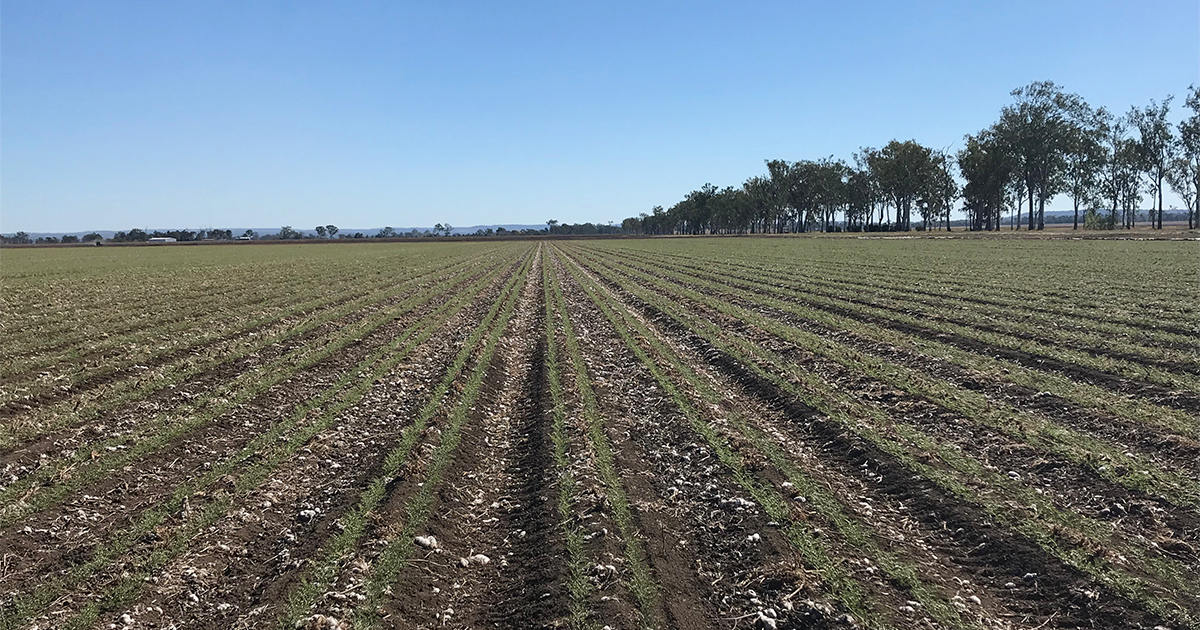
Management notes:
- The plants are growing well.
- Soil moisture is minimal near the surface.
- No pest or disease concerns at this stage.
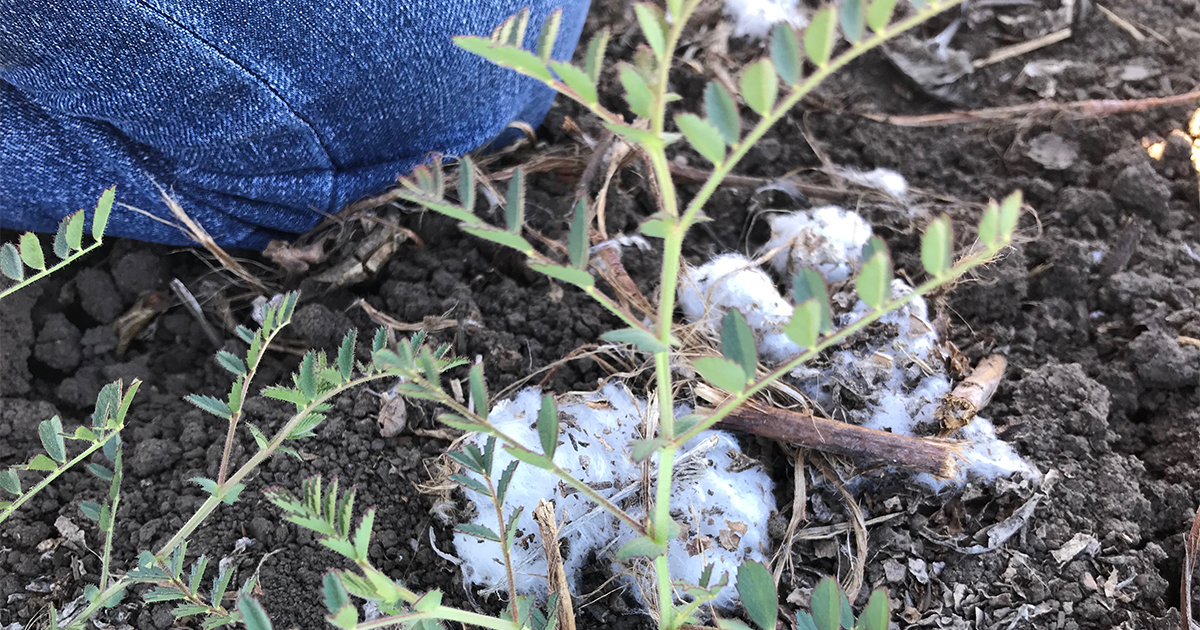
Week 5
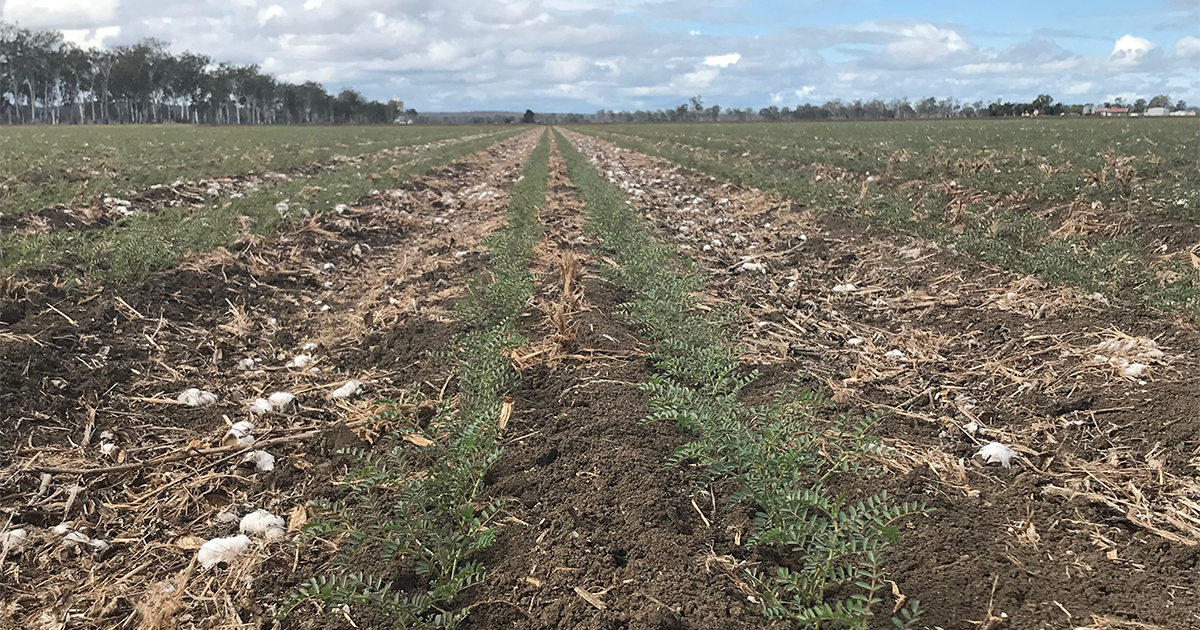
Management notes:
- Crop continuing to grow well.
- Some plants older leaves appear yellowish and brown, this could be caused by frost and dry weather. This damaged shouldn't affect the plants' overall growth.
- The ground is starting to crack open due to minimal moisture and no rain since planting.
- Nodules on the root/base of the plant are present indicating a healthy and well inoculated plant.
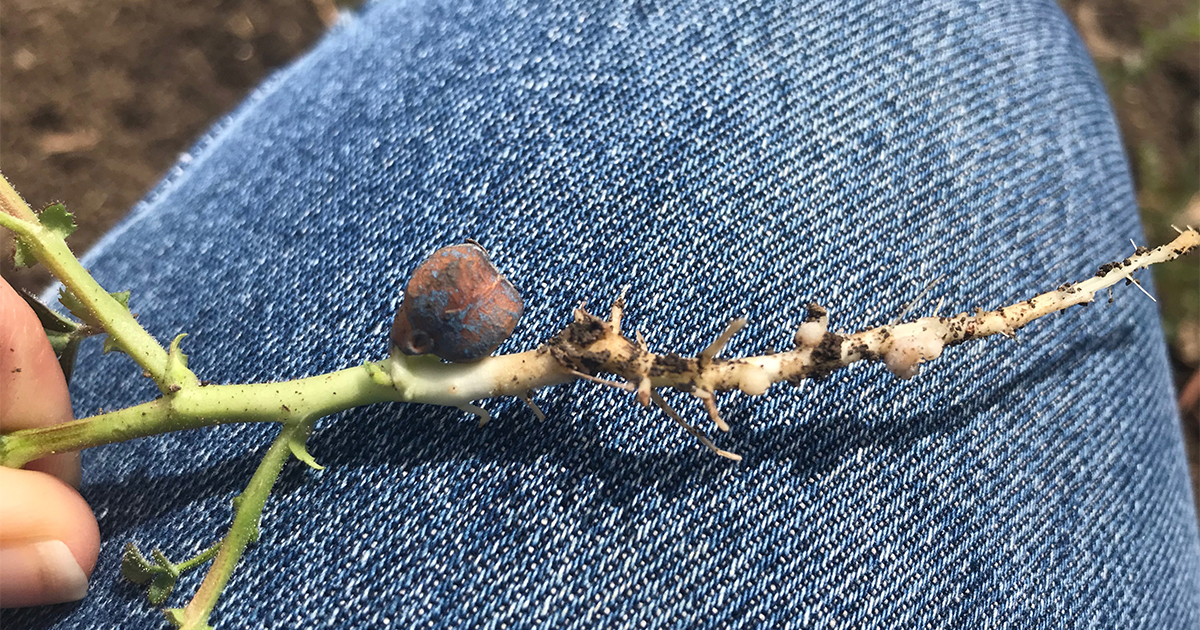 Healthy nodules of active rhizobia fixing nitrogen from the atmosphere for the chickpea plant to use.
Healthy nodules of active rhizobia fixing nitrogen from the atmosphere for the chickpea plant to use.
Week 6
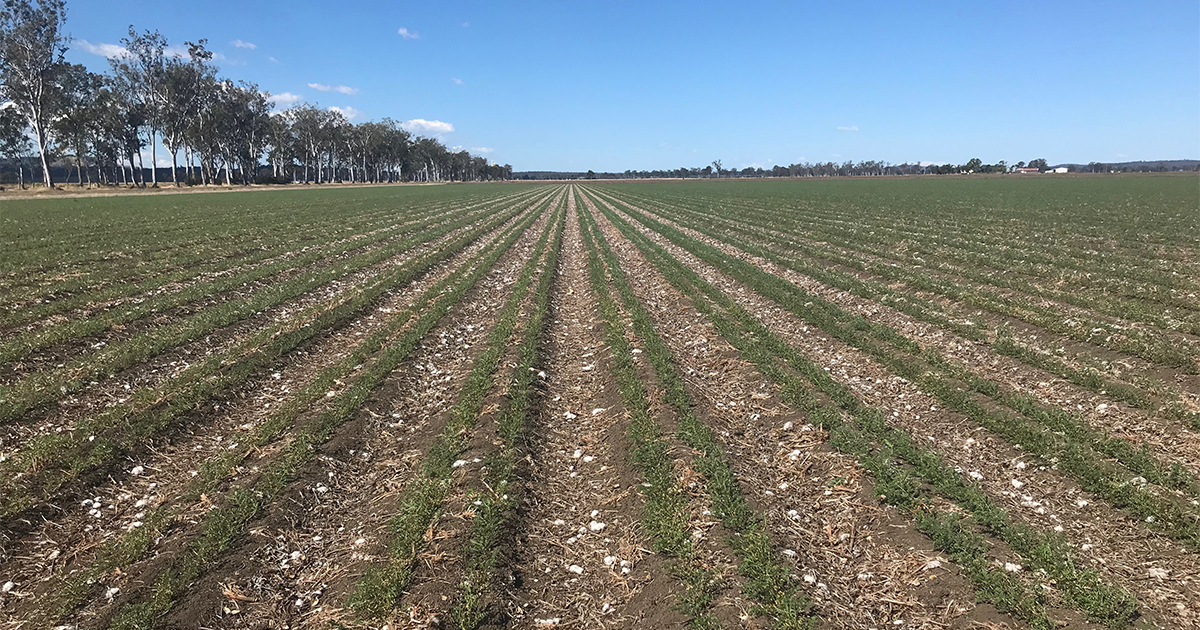
Management notes:
- A rainfall event occurred at the end of last week, however it was very minimal and not enough to make a difference to the soil moisture profile.
- The chickpea plants are growing well and have grown beyond the frost damage.
- No pest or disease concerns at this stage.
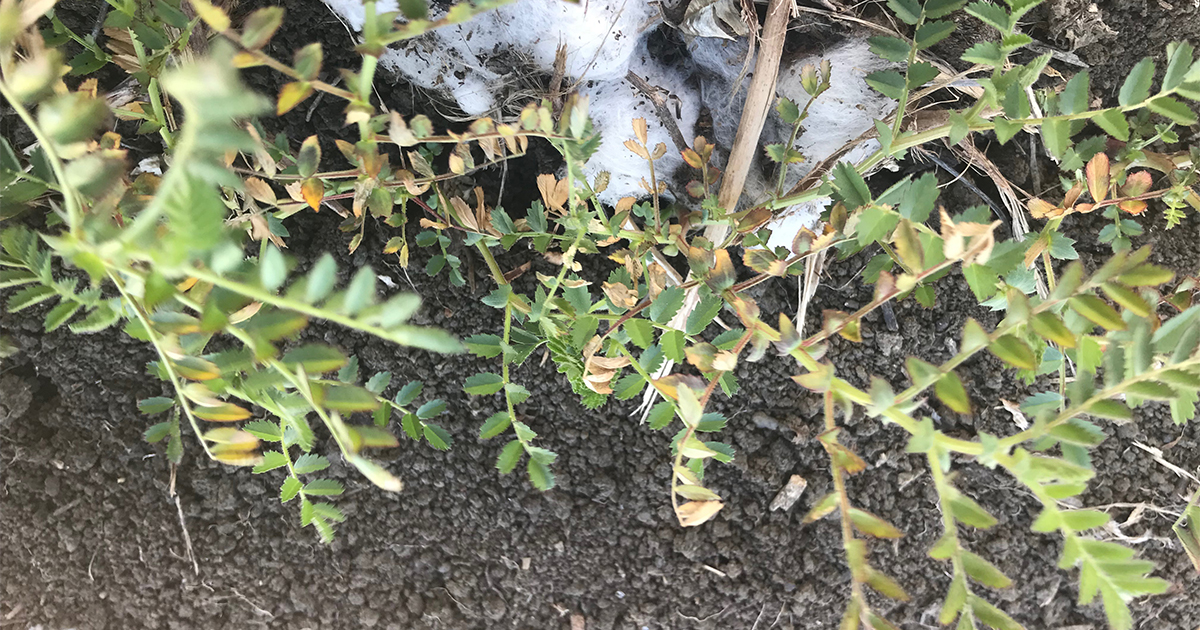 The crop is growing through earlier frost damage.
The crop is growing through earlier frost damage.
Week 7
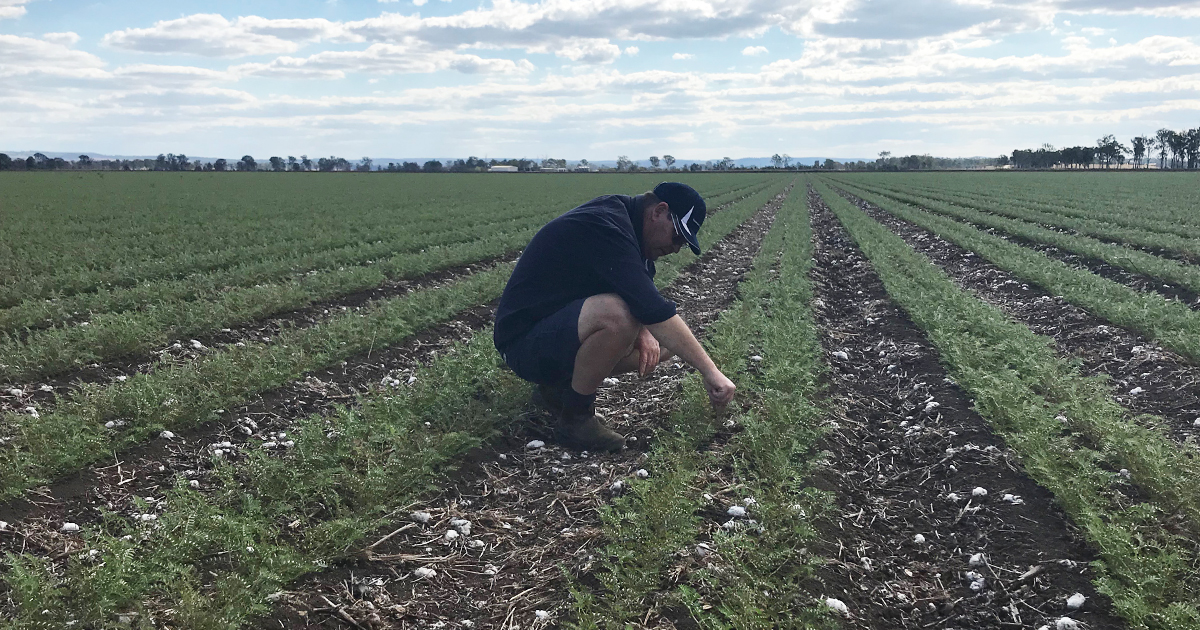 Management notes:
Management notes:
- The plants continue to grow well and the canopy has closed over the rows.
- There is colour variation on the leaves, indicting moisture stress and in response to the recent cold change.
- Some leaf damage was observed from grubs nibbling, however the impact on the plant is minimal at this stage.
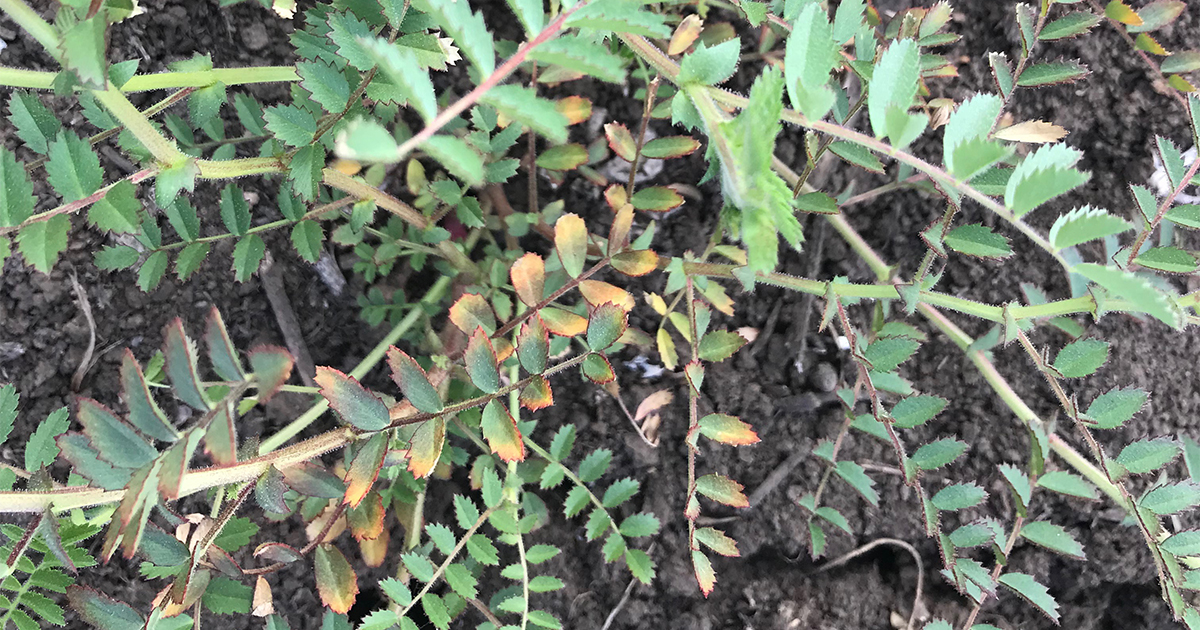 Leaf damage indicating moisture stress and cold temperatures.
Leaf damage indicating moisture stress and cold temperatures.
Week 8
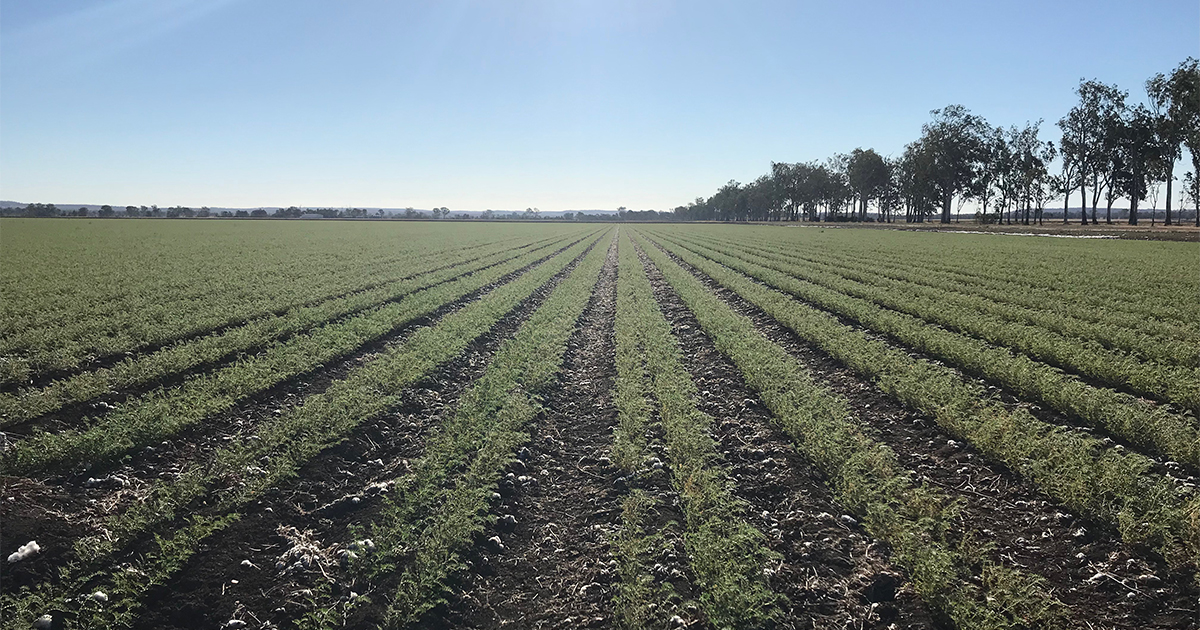
Management notes:
- The plants are continuing to grow despite no soil moisture available.
- A few dead plants present across the paddock.
- The crop is around 25 cm high.
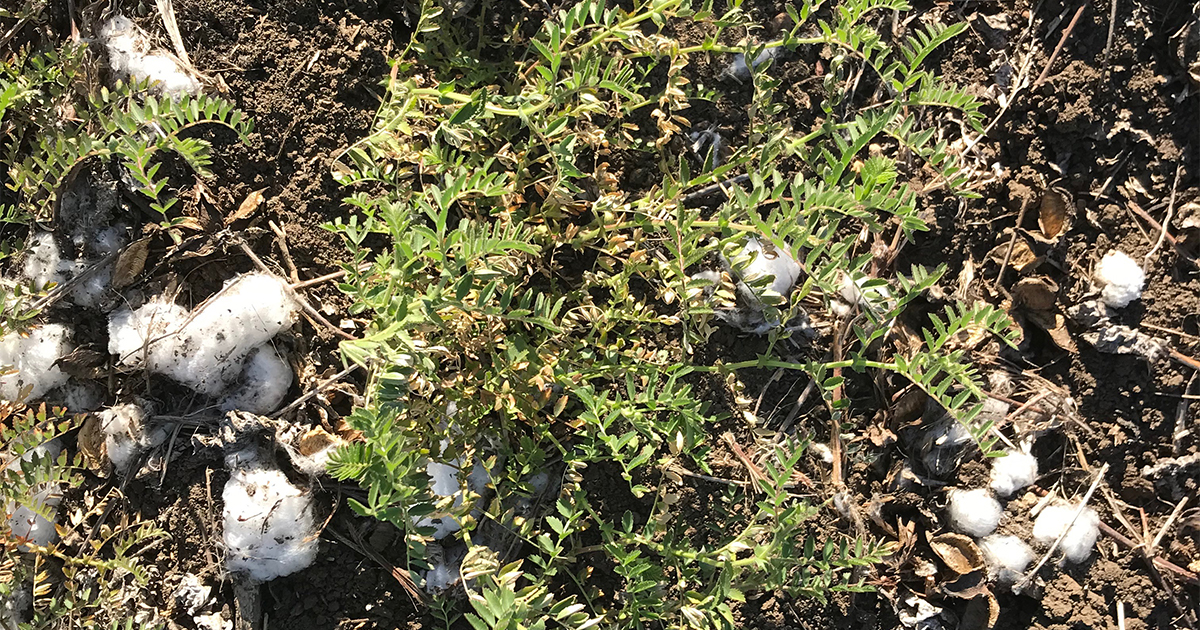 Some plants are showing signs of moisture stress.
Some plants are showing signs of moisture stress.
Week 9
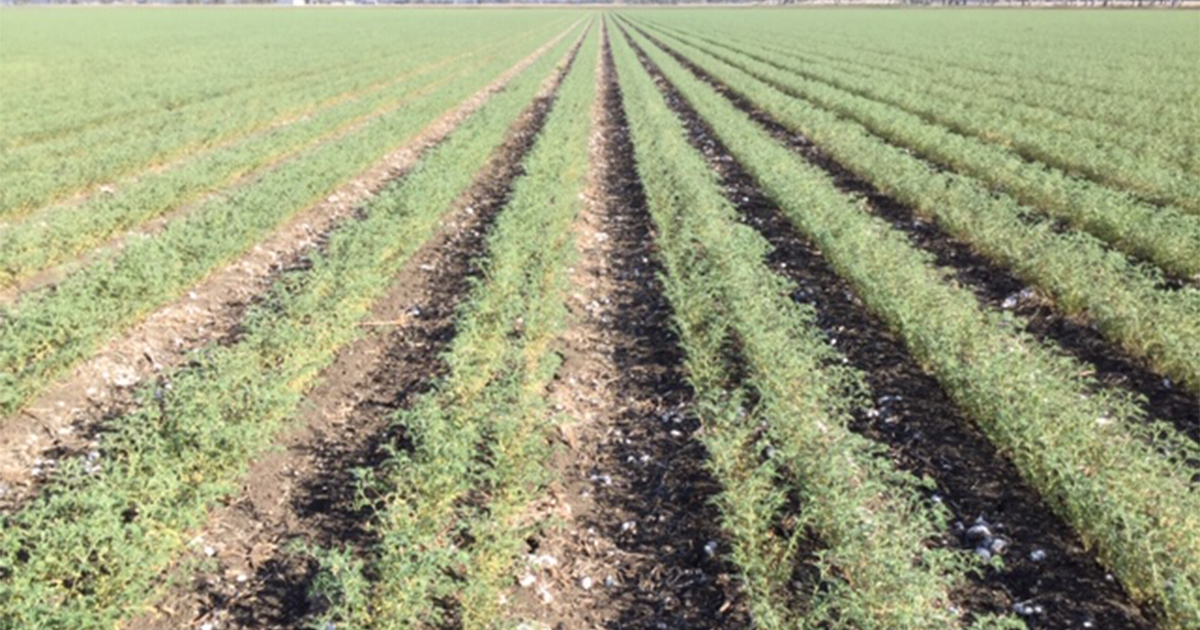
Management notes:
- Crop continuing to grow – now 30 cm high.
- Beginning to flower.
- Still waiting for rain.
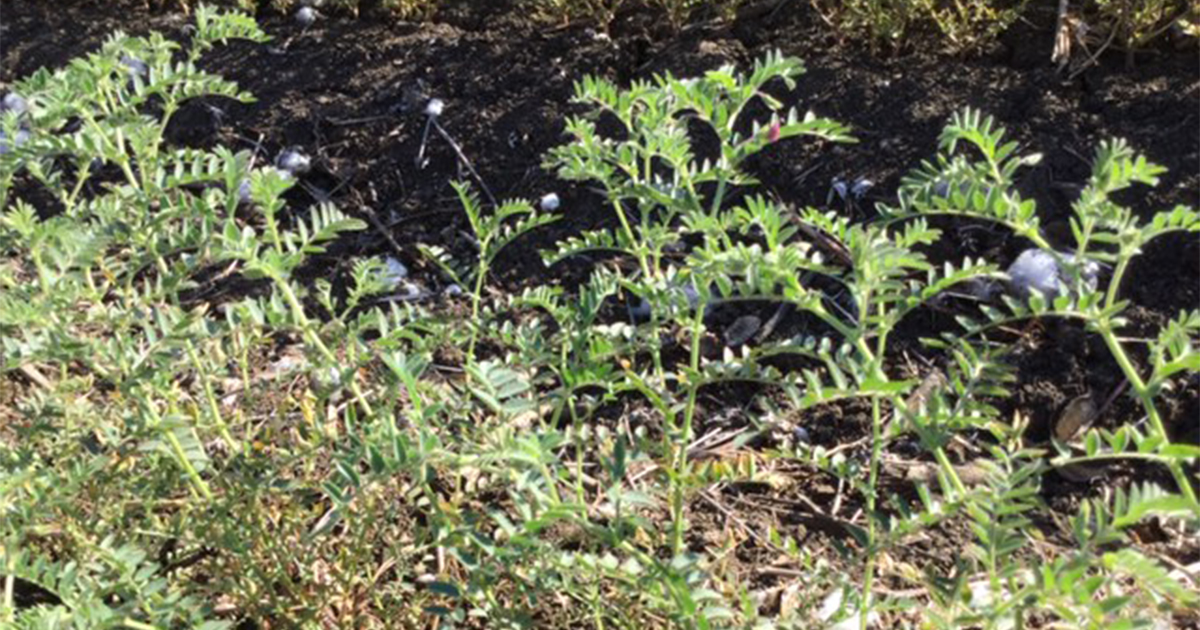 Flowering has started.
Flowering has started.
Week 11
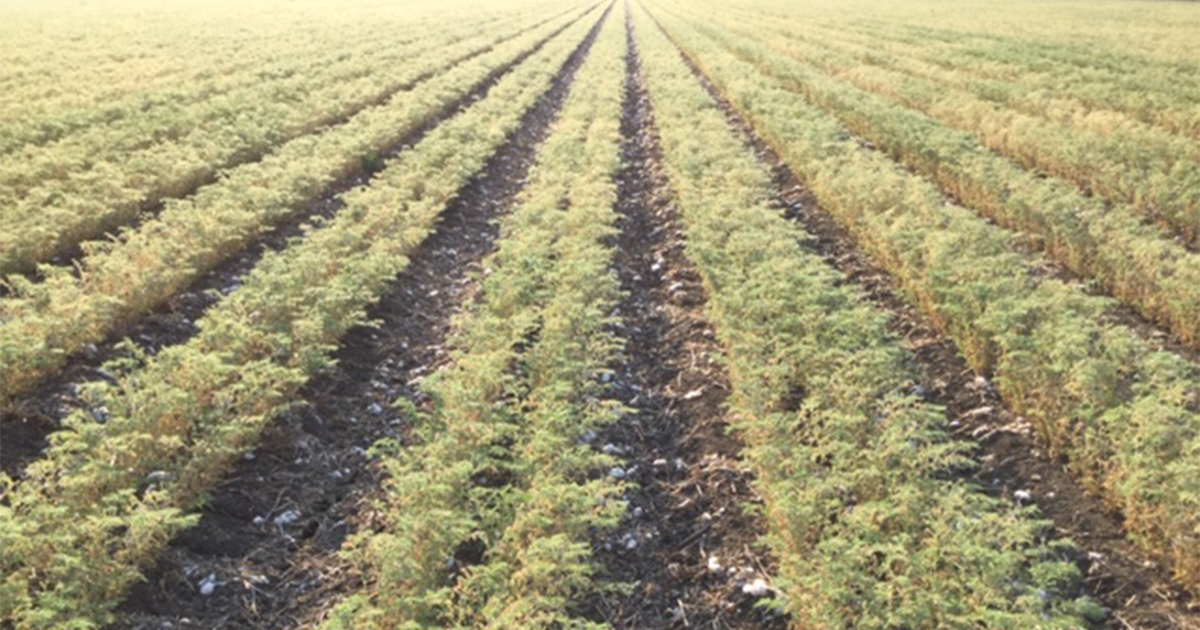
- The last two weeks have been tough for these chickpeas.
- The field is visibly yellow.
- Some pods have set and are making grain and the plants are still trying to flower.
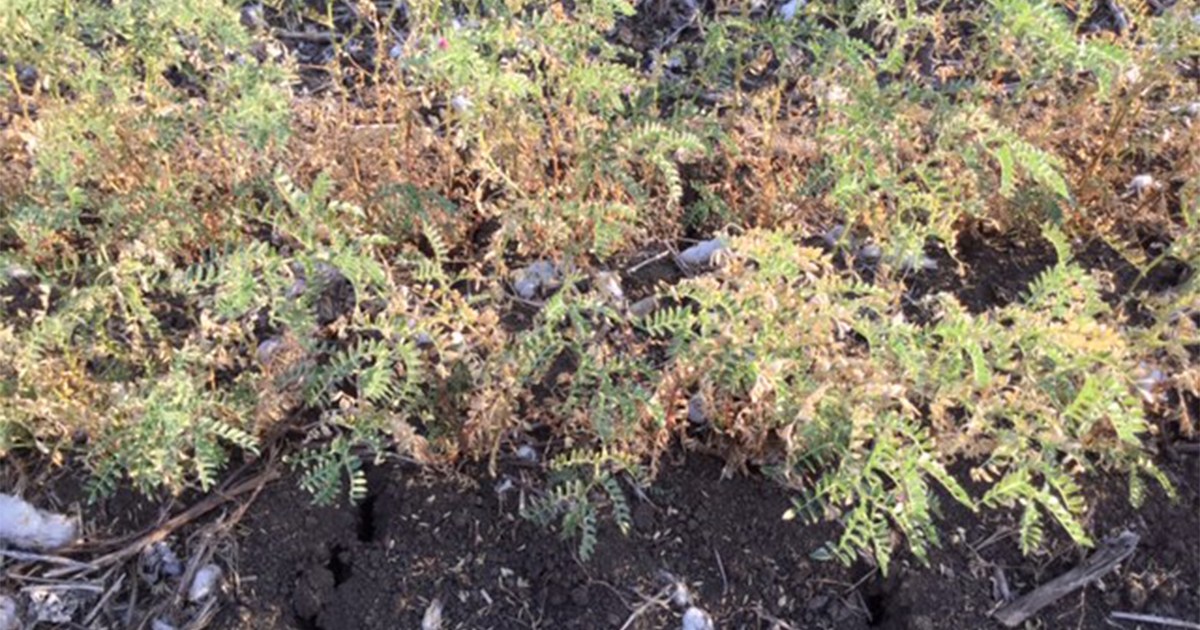 Plants are showing clear signs of stress but still trying to flower and set pods.
Plants are showing clear signs of stress but still trying to flower and set pods.
Week 13
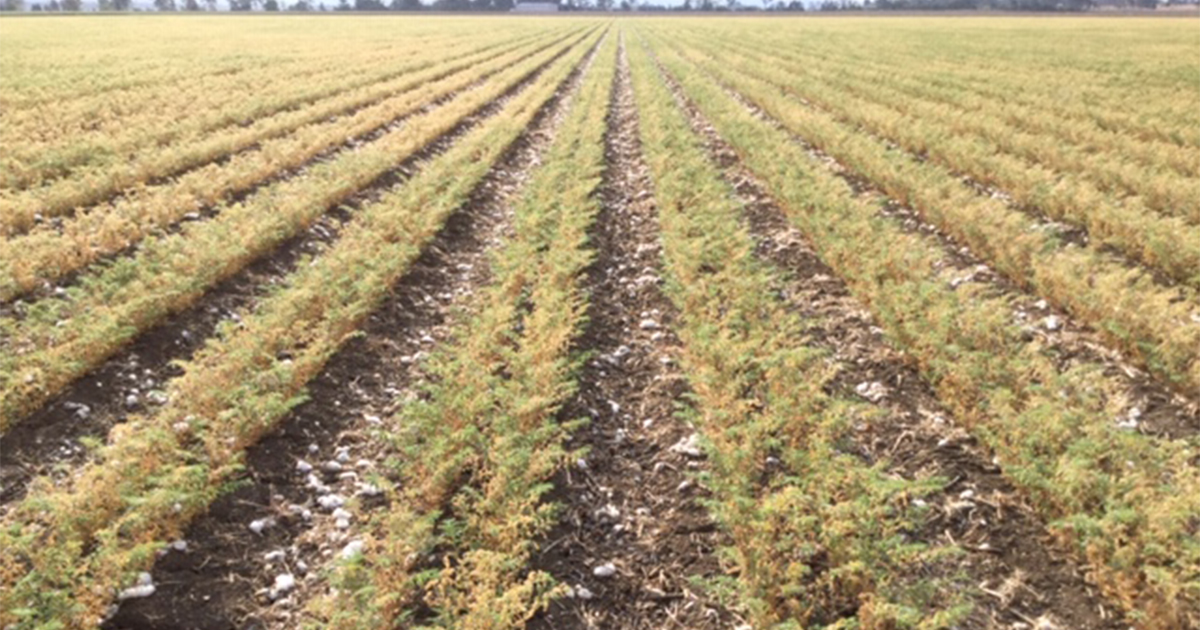 Management notes:
Management notes:
- The crop is still struggling on, trying to flower, set and fill pods.
- Some helicoverpa present doing damage but it is not economically viable to spray.
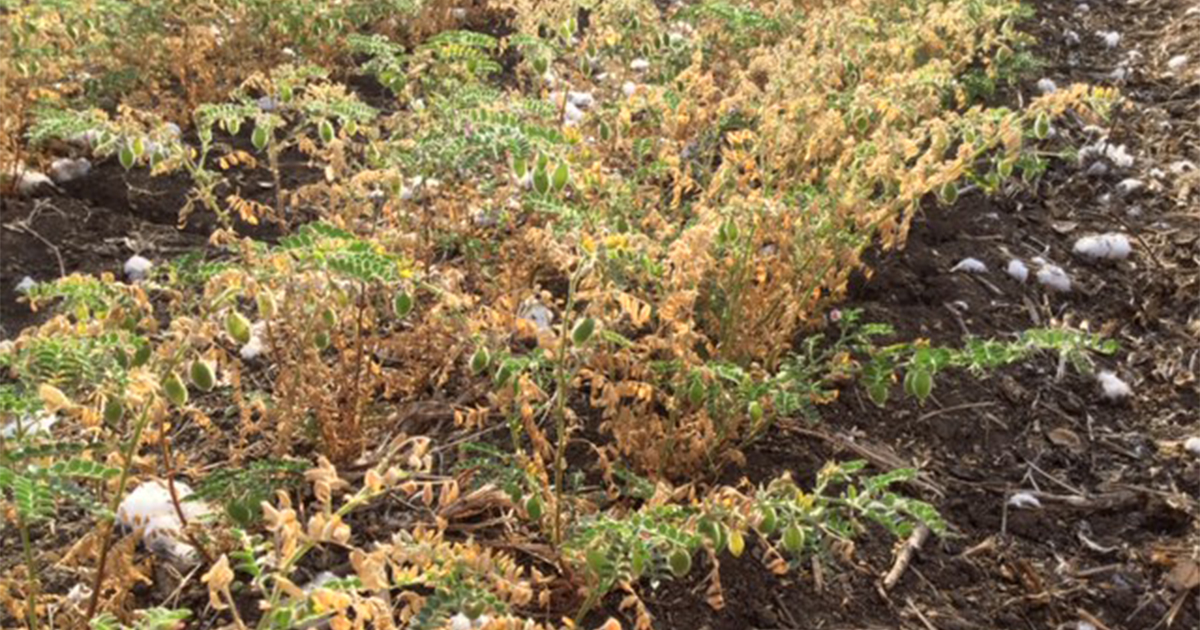 Pods are setting and filling in extraordinarily dry conditions.
Pods are setting and filling in extraordinarily dry conditions.
Week 14
 Management notes:
Management notes:
- Still no rain for this crop.
- The chickpeas are hanging on but the 37degree heat expected in the coming week may be the end for them.
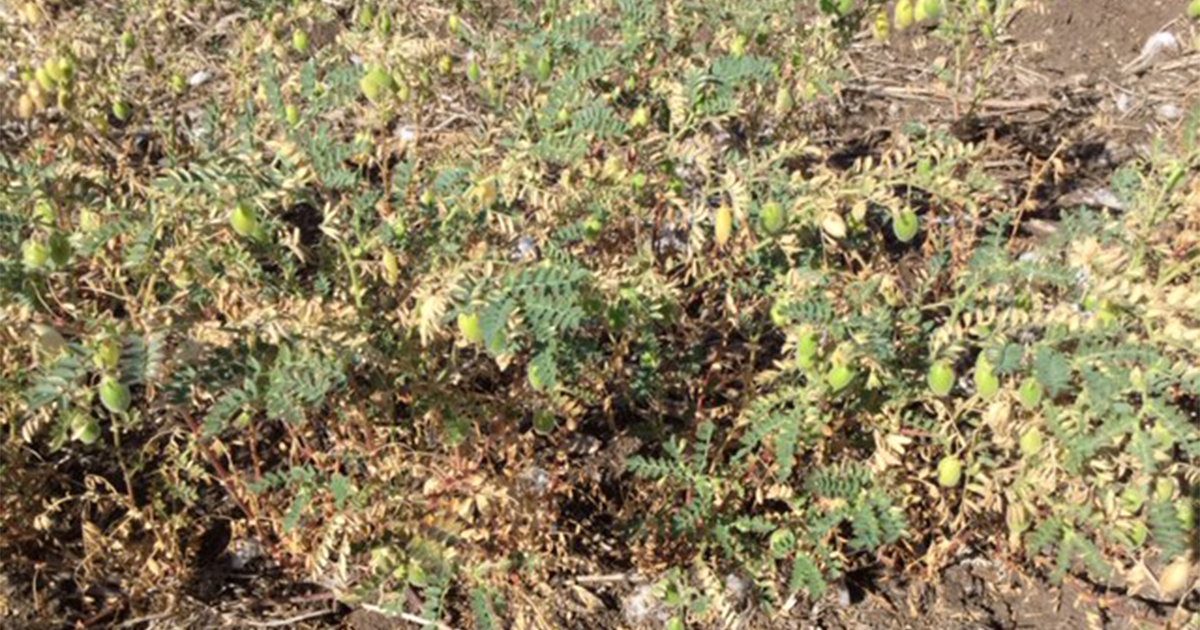
Read Pulse Check blog articles | Pulse Check Coastal facebook | Subscribe to the monthly newsletter

